
STEM can mean many different things. Sometimes when teachers or parents think of STEM they think of coding, robots, iPads, and lots of expensive technology. However, some of my students’ favorite activities of the year, the ones they learned the most from, were very simple no prep math STEM projects using absolutely no technology. In fact, they took nothing more than dollar store supplies and student creativity and collaboration. What’s even better, many students redid the projects at home just for fun adding improvements.
Here are three that have been a hit every time I have done them. They’re appropriate for any grades 2-8 as they can be approached at different levels of sophistication, and are great for a multiage activity as well.
Boats
Student challenge: build a boat that will hold the most weight without sinking. Supplies: paper (you could provide a variety of kinds but it’s not necessary,) paper clips, popsicle sticks, straws, and tape. If you want to add additional supplies you could use coffee filters, modeling clay, and aluminum foil.
I brought a tub of water into the class and had students test the weight with hexagon weights that came with our classroom scale. Another time we tested with pennies. Both times we graphed the results for additional math practice.
One year I did it around Easter and we put peeps in the boats- I told the kids if their peep didn’t sink they could eat it! They LOVED this and talked about it for months.
The Schooling a Monkey homeschool blog even has a post about making your boat with Peeps!
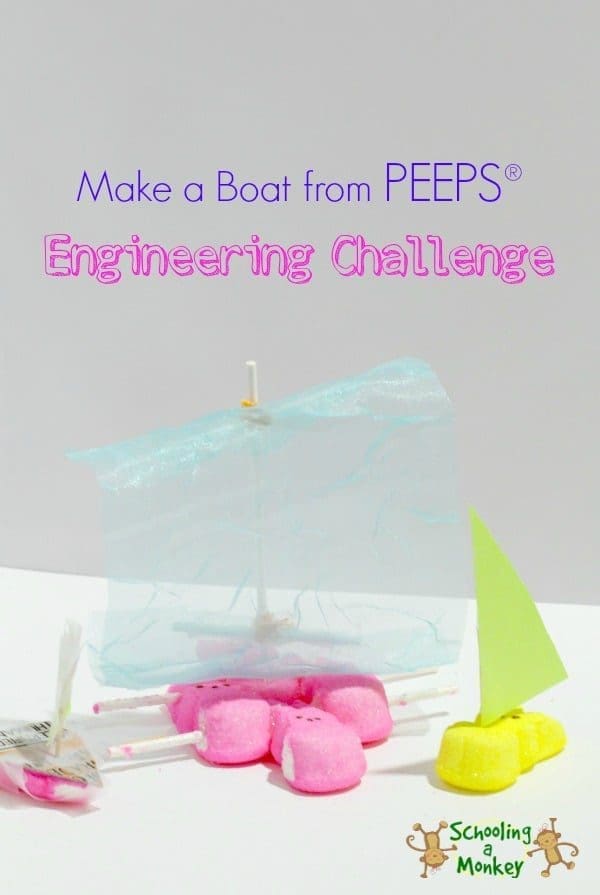
If you are able to go outside and use a kiddie pool for your water you can also race boats by blowing them with a straw as explained in STEM Junk Boats from Playdough to Plato.
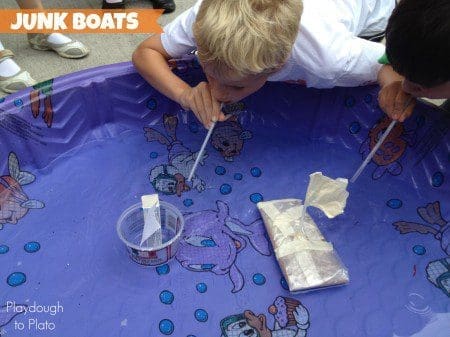
If you want to teach science concepts of density/buoyancy you can use this printable version of the boat challenge from Scholastic. It has students test different objects to see if they sink or float and record the results before they design and build a boat to “carry a princess across a moat.”
Don’t want to use a tub of water in your classroom? Here’s a blog post from Math Chick about a 5th/6th grade math teacher who had her students blow their paper sailboats down the hallway with a fan. They then measured how far each boat traveled and made a scatterplot!
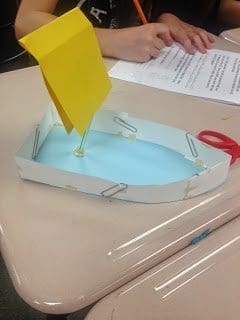
Catapults
I started by teaching all of my students to make the basic popsicle stick catapult design from Little Bins for Little Hands. We used pom poms to test it (cotton balls would also work,) though once at a math camp we used mini marshmallows (as shown in Little Bins’ picture below), which the kids found even more exciting.

After everyone understood basic catapult design I challenged them to make their own catapult that would shoot the farthest. I got the basics of this from the Catapult Challenge post at Vivify STEM (written for middle school students but my elementary students were able to do it.) Supplies to choose from included newspaper, craft sticks, masking tape, plastic cups, soda and soup cans, rubber bands, plastic spoons. It was really fun to see what they came up with. Some of the catapults were huge! We tested them, measured the distance with a measuring tape and graphed the results. We also had students try to make the projectile land on a target, and knock down a paper cup tower.

Bridge Building
There are many approaches to a STEM bridge building challenge. One of the simplest and yet effective ones I have tried is this Straw Bridge challenge from The Stem Laboratory. Students are taught the five basic types of bridges (arch, beam, suspension, cable stay, and truss) and then challenged to build a bridge that would hold a cup of 100 pennies using nothing but straws, scissors, and tape.
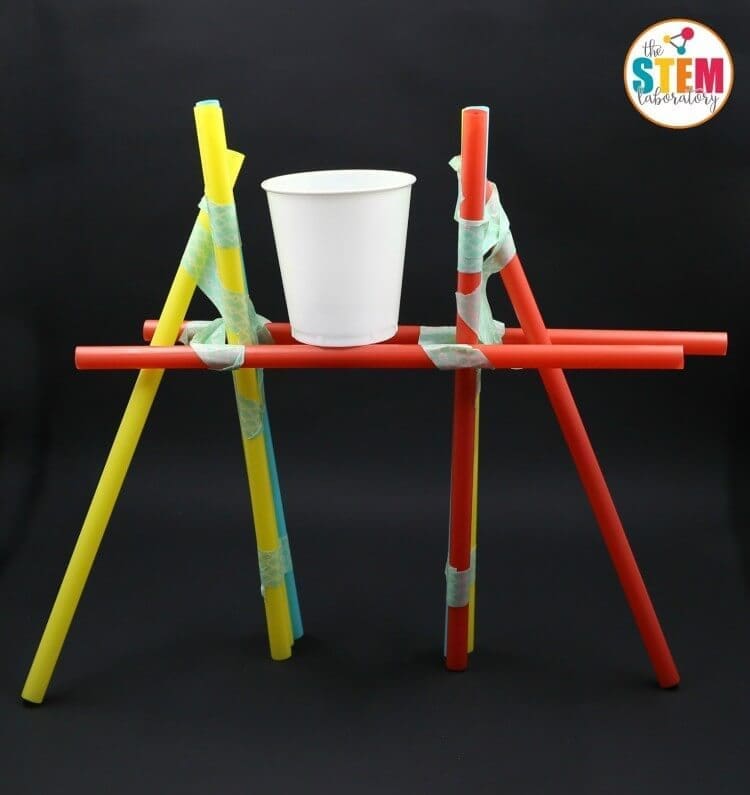
Another bridge challenge option is the Popsicle Stick Bridge from TryEngineering. Students use nothing but up to 200 popsicle sticks and glue. Their bridges must have a span of at least 14 inches and be able to hold a five pound weight (younger students) or a twenty pound weight (older students).
If you have older students and want to increase the challenge, Discovery Ed has one where the bridge must include a tower. It has students design and build a bridge that will hold a tower. The bridge must span an opening of 30 cm and must be at least 15 cm wide. The tower must be at least 30 cm tall and its base cannot be wider than 15 cm. The base must be a geometric shape or have support legs. It must stand freely and be movable.
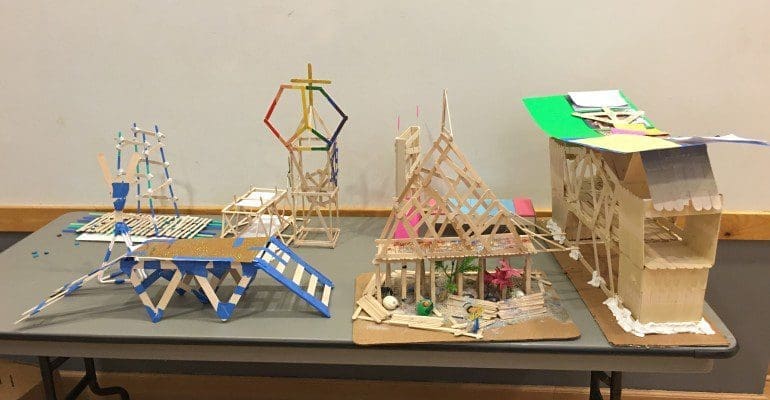
Please also see my posts Fun With Food STEM Challenges and End of the Year Math Projects for other no prep creative math projects!
Also see my post STEM Class Fun for photos and reports of how the projects actually went from a weekly homeschool enrichment STEM class I taught!
